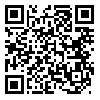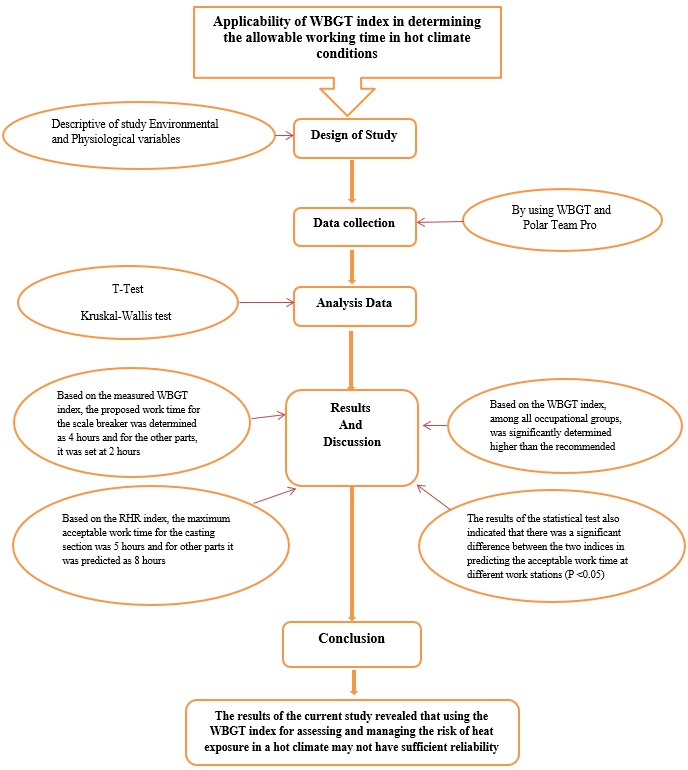Volume 11, Issue 4 (12-2021)
J Health Saf Work 2021, 11(4): 614-626 |
Back to browse issues page
Download citation:
BibTeX | RIS | EndNote | Medlars | ProCite | Reference Manager | RefWorks
Send citation to:



BibTeX | RIS | EndNote | Medlars | ProCite | Reference Manager | RefWorks
Send citation to:
Afshari D, Nourollahi-Darabad M, Shirali G. Applicability of WBGT index in determining the allowable working time in hot climate conditions. J Health Saf Work 2021; 11 (4) :614-626
URL: http://jhsw.tums.ac.ir/article-1-6577-en.html
URL: http://jhsw.tums.ac.ir/article-1-6577-en.html
1- Department of Occupational Health Engineering, School of Public Health, Ahvaz Jundishapur University of Medical Sciences, Ahvaz, Iran
Abstract: (1859 Views)
Introduction: Heat stress is a critical problem in hot industries, especially in incredibly hot climates. It can greatly impair the work process and put the health of workers at risk. This study aims to investigate the applicability of the WBGT index in determining the allowable working time in very hot weather conditions in one of the steel industries in Ahvaz.
Material and Methods: This study was conducted in different sectors of a steel industry in Ahwaz. The physiological parameters of sixty workers working in different parts of the industry were evaluated. Environmental variables and the Wet-Bulb globe temperature (WBGT) Index were also simultaneously measured during work shifts. The acceptable work time was calculated based on the reserve heart rate (RHR) and the WBGT index.
Results: The heat stress index among all occupational groups, based on the WBGT index, was incredibly high and surpassed the recommended level (P<0.05). The statistical test results also indicated a significant difference between the two indices in predicting the adequate work time at different work stations (P <0.05).
Conclusion: The current study results revealed that using the WBGT index for assessing and managing the risk of heat exposure in a hot climate may not have sufficient reliability and performance. Consequently, it is recommended to use optimal indices based on environmental and physiological assessments in a hot climate in order to monitor and control the heat stress associated with heat exposure.
Material and Methods: This study was conducted in different sectors of a steel industry in Ahwaz. The physiological parameters of sixty workers working in different parts of the industry were evaluated. Environmental variables and the Wet-Bulb globe temperature (WBGT) Index were also simultaneously measured during work shifts. The acceptable work time was calculated based on the reserve heart rate (RHR) and the WBGT index.
Results: The heat stress index among all occupational groups, based on the WBGT index, was incredibly high and surpassed the recommended level (P<0.05). The statistical test results also indicated a significant difference between the two indices in predicting the adequate work time at different work stations (P <0.05).
Conclusion: The current study results revealed that using the WBGT index for assessing and managing the risk of heat exposure in a hot climate may not have sufficient reliability and performance. Consequently, it is recommended to use optimal indices based on environmental and physiological assessments in a hot climate in order to monitor and control the heat stress associated with heat exposure.
Type of Study: Research |
Received: 2021/12/24 | Accepted: 2021/12/31 | Published: 2021/12/31
Received: 2021/12/24 | Accepted: 2021/12/31 | Published: 2021/12/31
| Rights and permissions | |
 |
This work is licensed under a Creative Commons Attribution-NonCommercial 4.0 International License. |






